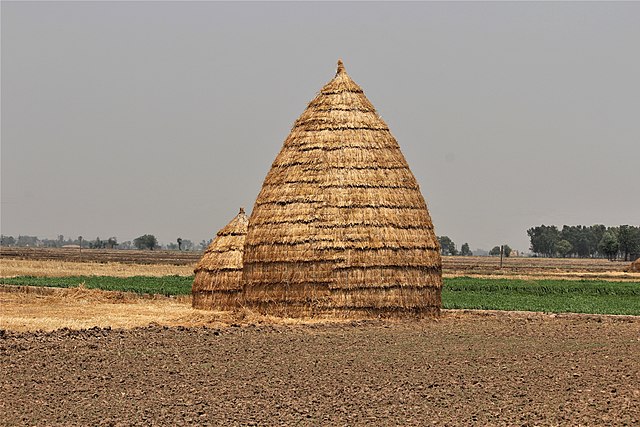Crop residues are waste materials generated by agriculture. The two types are:Field residues are materials left in an agricultural field or orchard after the crop has been harvested. These residues include stalks and stubble (stems), leaves and seed pods. Good management of field residues can increase efficiency of irrigation and control of erosion. The residue can be ploughed directly into the ground, or burned first. In contrast, no-till, strip-till or reduced-till agriculture practices are carried out to maximize crop residue cover. Simple line-transect measurements can be used to estimate residue coverage.
Process residues are materials left after the crop is processed into a usable resource. These residues include husks, seeds, bagasse, molasses and roots. They can be used as animal fodder and soil amendment, fertilizers and in manufacturing.
Stubble field in Brastad, Sweden
Straw is an agricultural byproduct consisting of the dry stalks of cereal plants after the grain and chaff have been removed. It makes up about half of the yield by weight of cereal crops such as barley, oats, rice, rye and wheat. It has a number of different uses, including fuel, livestock bedding and fodder, thatching and basket making.
Bundles of rice straw
Pile of stacked small square straw bales sheltered under a clear tarpaulin
Straw lines and a combine harvester
A traditional method of storing wheat hay in Punjab.





